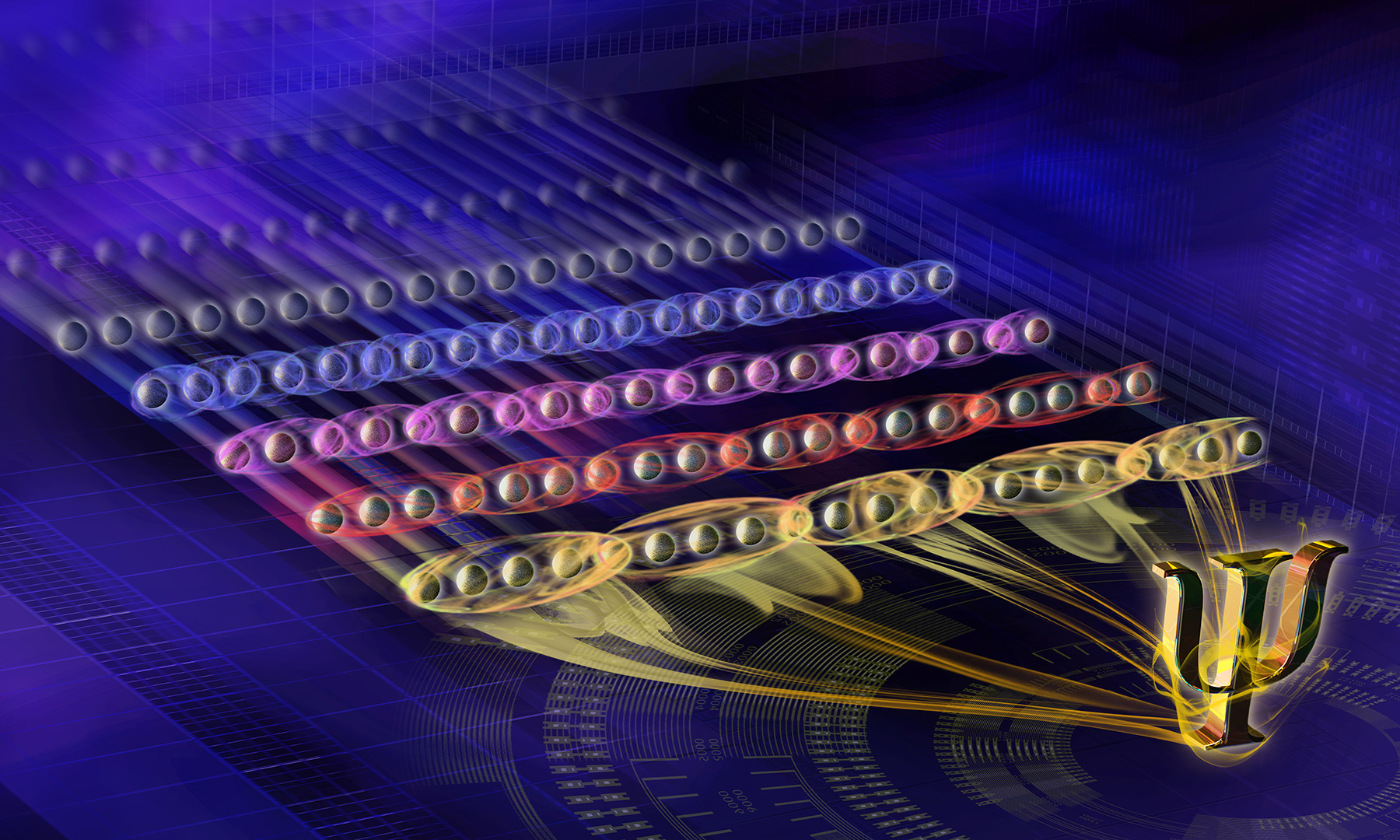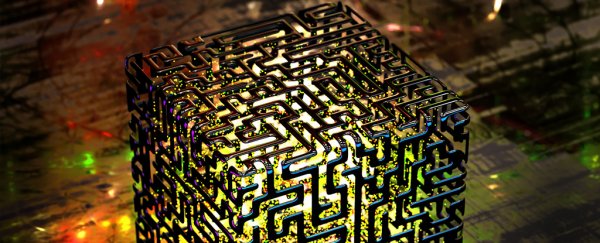If we want quantum computers, we're going to need a complex system of quantum entangled particles - particles that are intrinsically linked so that whatever happens to one instantaneously affects another.
That's a whole lot easier said than done, of course - but a team of physicists has just breached an exciting milestone by creating a 20-bit quantum register.
Quantum bits, or qubits, are the basic building blocks of quantum computing, just like bits are the building blocks of traditional computing.
But what's challenging about them is that they rely on subatomic particles' spooky ability to exist in more than one state at the same time.
Regular bits can exist in two states - 1 or 0. Qubits would also be based on the binary system, but thanks to entanglement they can exist in a superposition of both states, rather than one or the other, as bits must do.
This would allow for a computer that is vastly faster and more powerful than the computers we currently use.
But that's only if the qubits can be combined to create a register of well-characterised, entangled qubits.
The previous record for a quantum register with individually addressable qubits was set in 2011, when physicists from Rainer Blatt's laboratory at the Institute of Experimental Physics at the University of Innsbruck in Austria entangled 14 individually addressable qubits for the first time.
Now, Blatt and a team of physicists and theorists have built a system of 20 qubits whose quantum states can be individually controlled.
In this experiment, 20 charged calcium atoms, or ions, arranged in a line served as the qubits, and they were entangled using a series of lasers.
 (IQOQI Innsbruck/Harald Ritsch)
(IQOQI Innsbruck/Harald Ritsch)
The team were able to get the calcium ions to entangle with two, three, or occasionally even four other calcium ions in the system.
This isn't the first time so many particles have been entangled - but what's exciting is that the team were able to individually read and address each of the qubits.
"There are quantum systems such as ultra-cold gases in which entanglement between a large number of particles has been detected," said lead author Nicolai Friis, a physicist at the Austrian Academy of Sciences in Vienna.
There are also early stage quantum computers out there that argue more qubits - such as IBM's 50-qubit machine and Google's 72-qubit Bristlecone.
But in these cases, the individual quantum states of the qubits aren't controllable, and nor can the system read out the individual qubits.
To overcome this, the team used an ion trap to confine the calcium ions using a magnetic field. Then they used lasers to entangle the ions, creating a 20-qubit system, with each qubit encoded into the electronic state of a trapped atomic ion.
However, an entangled system involving multiple particles can't be described as individual particles, but only as a whole entangled multi-particle system.
This makes detection difficult - so the team had to devise a custom means of detecting multi-particle entanglement.
"The particles are first entangled in pairs," explained senior author Ben Lanyon from the Austrian Academy of Sciences. His team worked alongside researchers at the University of Ulm in Germany.
"With the methods developed by our colleagues Vienna and Ulm, we can then prove the further spread of the entanglement to all neighbouring particle triplets, most quadruplets and a few quintuplets."
The theorists at Ulm and Vienna developed two different approaches.
The Vienna team developed a method that uses only a small number of measurements with results that are easy to evaluate. This method was used to detect the entanglement of up to three particles at one time in the register.
The Ulm team took a more complex, but efficient, numerical approach. It was able to detect the entanglement of up to five particles at a time. Using these methods, they were able to show all 20 qubits being entangled.
But the team believes the methods they devised can be used to create an even larger quantum register - and, because the qubits can be read individually, it would be suitable for applications such as quantum simulations and quantum information processing.
"Our medium-term goal is 50 particles," Blatt said. "This could help us solve problems that the best supercomputers today still fail to accomplish."
The research has been published in the journal Physical Review X, where it can be read in full.
